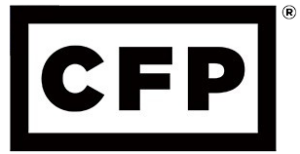News Years Resolutions – In bite size pieces
Cleaning up personal finances remains one of the top resolutions every New Year. But we all know what happens to most such self-promises, so here’s a month-by-month to-do list to cultivate better financial health.
January: Organize paperwork. This obvious starting point eludes many. Are your financial documents organized, in paper or virtually, so information is at your fingertips? Your heirs will be eternally thankful if you unexpectedly die or are incapacitated.
February: Consolidate investments. Trim your number of accounts by first consolidating dormant 401(k)s into an active 401(k) or an individual retirement account (IRA). The right choice will depend on whether you want to do annual back-door Roth contributions and active 401(k) fund choices. Determine if non-retirement brokerage accounts and cash accounts should also be pared down. It’s common to accumulate multiple cash across at various banks over the years due to loan incentives, moves, and joint accounts with family. Spreading your assets across various custodians and multiple accounts is not smart diversification – it’s a recipe for confusion.
March: Follow the money. Most of my new clients don’t have a good handle on personal cash flow – they’re too busy working! Without understanding the basics of gross pay, tax due, savings, and general spending, it’s difficult to be efficient and proactive with monetary decisions. Charting out a simple income statement of gross pay, tax, and fixed savings can help you determine your spending level. If it seems too high and you notice a lot of cash build-up, you likely have an opportunity to save more throughout the year to more tax or return-efficient accounts. If it seems too high and you don’t have cash build-up, there is your reason to get more granular with the budget to figure out how to scale back spending.
April: Tax smarts. Most would agree it’s better to marginally owe state and federal taxes instead of overpaying throughout the year. Who wants to give the government an interest-free loan? But on the flip-side, you don’t want to underpay to the point of triggering a penalty. Make sure when you leave the CPA’d office you’re of good understanding on whether you’ll need to make withholding adjustments or estimated payments for the coming year to meet safe-harbor requirements. I often see this issue tied to career changes, stock options, larger than normal investment earnings/gains, and retirement.
Safe Harbor Requirements
- You pay at least 90% of the tax you owe for the current year, or 100% of the tax you owed for the previous tax year, or
- You owe less than $1,000 in tax after subtracting withholdings and credits
This rule is altered slightly for high-income taxpayers. If the adjusted gross income on your previous year’s return is over $150,000 (over $75,000 if you are married filing separately…
- You must pay the lower of 90% of the tax shown on the current year’s return, or
- 110% of the tax shown on the return for the previous year.
May: Investment smarts. How much do your investments cost you? Do you know what your insurance agent, 401(k) plan or financial advisor charges? How about the underlying expenses you pay to buy mutual funds or exchange-traded funds?
Are your investments allocated wisely to minimize taxes? For example, do you hold real estate investment trusts in your tax-deferred account? Municipal bonds in your taxable account? How much risk do you want take going forward?
June: What are you worth and why it matters. You can calculate your net worth (all your assets, such as your home and retirement funds, minus all your liabilities, such as your mortgage and credit card debt) many ways. A sophisticated net worth calculation projects factors of asset growth such as rates of investments’ returns, inflation, risk, savings rate, and expected new liabilities to the end of your life. Powwow uses eMoney to project out your current path against various alternate scenarios and “what-ifs.” It’s common to find that subtle changes to spending, retirement dates, or savings can make a big impact whereas seemingly large decisions (ie – when to start Social Security) can end up being white-noise. This, of course, varies for everyone.
Your goal: Minimize the risk of outliving your assets.
July: Insure against risk. Insurance keeps you financially whole if disaster strikes. Determine if your existing liability and life insurance matches your current lifestyle and goals. If you’re a new homeowner, pet owner, spouse, and/or parent, it may be time to increase liability coverage by purchasing an umbrella policy. A million of coverage is relatively inexpensive at about $200/year. It may also be worth increasing life insurance through workplace offerings or an independent insurer.
Have you considered long-term care insurance, especially if you’re a woman with a longer life expectancy than a man? Getting quotes before a spouse dies or any major health incidents land on your records can help ensure a married and preferred health discount on the policy. The best time is usually around age 55-65.
August: Retirement planning. This planning starts in your 20s and does not end when you retire. If you’re employed, know when you can afford to retire (assuming you’re not laid off).
Are you aware of all strategies to maximize Social Security payouts? If retired, are you withdrawing from your accounts in the correct order? (Striking a nice balance of pulling from taxable holdings, tax-deferred and untaxed retirement). Calculating optimal distributions from IRAs and other taxable income sources annually can trim your taxes, especially when it comes to eliminating or reducing Medicare premium surcharges.
September: Gift wisely. You can give back in many ways to organizations and people you care about with donations of appreciated securities or with payments on college loans or new mortgages. The Internal Revenue Service offers several guidelines on gifting.
Your greatest gift may be taking care of yourself so you don’t eventually become a financial burden to your adult children.
October: Preparing for the inevitable. Engage an estate attorney. If you die without a will, your state of residency distributes your assets with no input from you.
If your estate documents are older than about seven years, refresh them. Everyone needs such estate documents as wills, living wills, medical health-care directives and powers of attorney to stipulate your wishes if you become unable to decide matters yourself.
You especially need these papers if you or your spouse, or both, are uncomfortable with financial matters and your children are younger than legal age.
Also, draw up or re-examine these documents if:
- You’re in a second marriage
- You own property in or reside in more than one state
- You’re concerned about privacy
- You own a business or
- Your family must consider special needs.
November and December: Reality check. If you followed these steps, you’re in the minority of individuals with the tenacity to tackle financial planning.
But you still should engage a professional advisor to check your assumptions. Be realistic about what you can accomplish on your own.
It’s important to get your finances right and keep them right all year.




